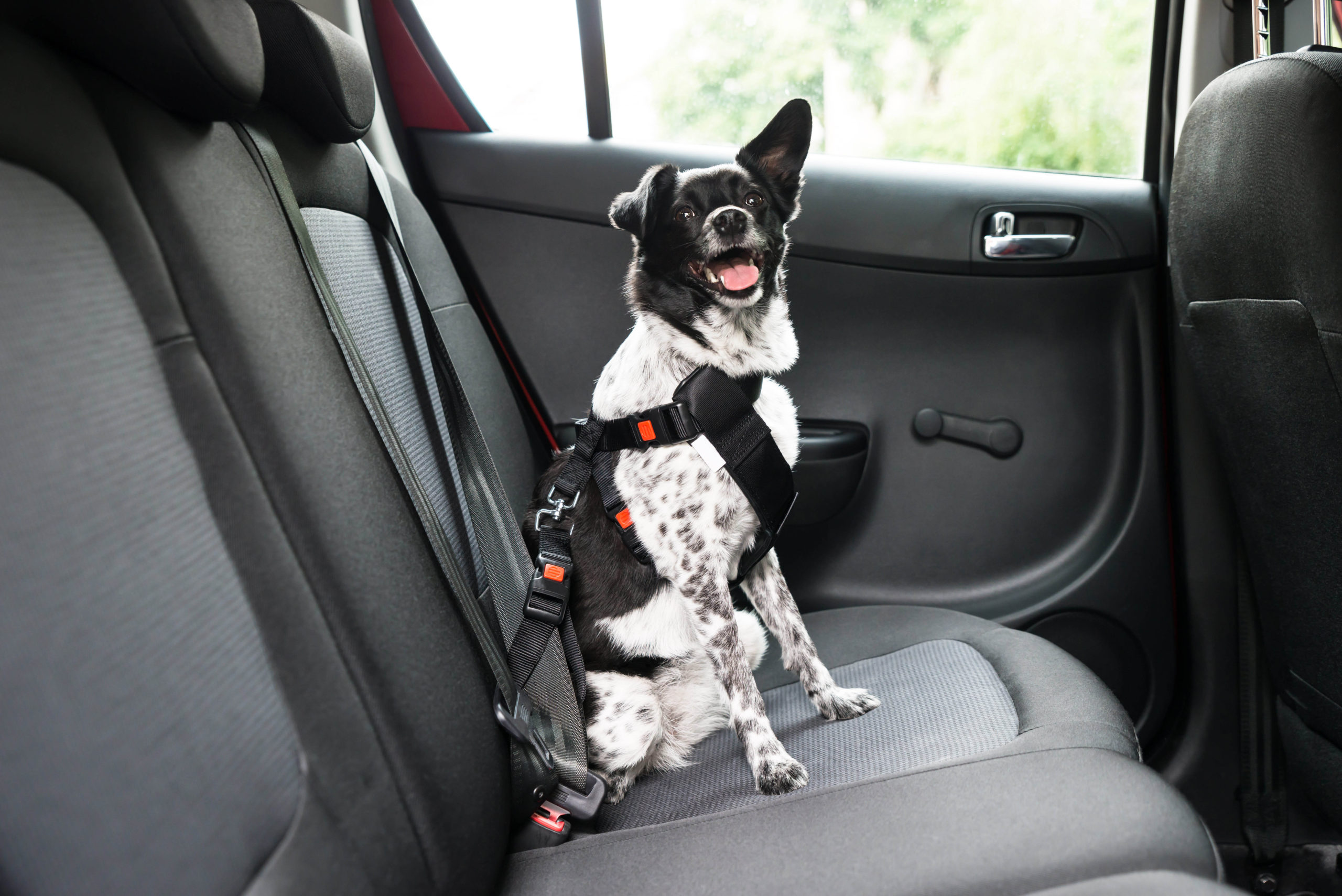The holiday’s that recently passed may have been a time to welcome a new four-legged friend into the family. For some, taking your fur baby to accompany you outside of your home makes your adventure all the more fun. You may not think twice about opening the door to allow your pet to jump in the back seat of your car. Could you be putting yourself and your pet at risk by not implementing safety precautions to ensure your animal has a safe and comfortable journey?
Before loading your animal into your vehicle, make sure you are prepared with all necessary equipment, as you would when traveling with an infant. Your pet travel kit should be equipped with a leash, collar, waste scooper and plastic bag, food, water, a favorite toy for your animal and any medication that your animal may need while out of the house.
If you plan to have your pet in the vehicle know that you run the risk of your pet becoming a distraction to the driver. To avoid such situations, it is best to have someone other than the driver in the vehicle with you to tend to the animal’s needs. Distracted drivers are unsafe drivers.
According to the AAA/Kurgo Study, 30% of drivers admit to being distracted by their animal while driving. To avoid such distractions, it is advised to keep your pet out of the front seat. In addition, airbag deployment could be deadly. If you have difficulty instituting such precautions, an animal carrier, or a harness connected by a seat belt tether, or an access barrier are some of the great options available to ensure your animal’s safety, while protecting the front seat driver from distractions.
The most common occurrence when traveling with a pet is to see them hanging out of the windows, however, this is also considered the most unsafe for the animal. According to both the ASPCA and Humane Society , the entirety of the pet’s body should be inside the vehicle. Your animal is just as susceptible as humans to being injured by debris in the air entering their eyes or lungs, as well as running the risk of being struck by an object outside of the vehicle. To state the obvious, you also run the risk of them jumping out of the vehicle and getting hurt or even lost. The ASPCA also suggests that you should never, for any reason, leave or transport your animal in the bed of the pickup truck.
Hydration is key to ensuring a safe trip for your pet. The increase of heat temperature inside of the vehicle compared to outside and the potential stress of a car ride could be a cause for increased dehydration of your cat or dog. It is important to always have water and a bowl accessible to your animal, or, plan for frequent stops to allow your animal to hydrate, stretch their legs, and use the bathroom.
At Rader Law Group, we provide all of our clients with a travel pop-up water bowl to ensure the safety of each of their pets when outside of their homes. You can also download our FREE pet safety wallet card at www.raderlawgroup.com.












